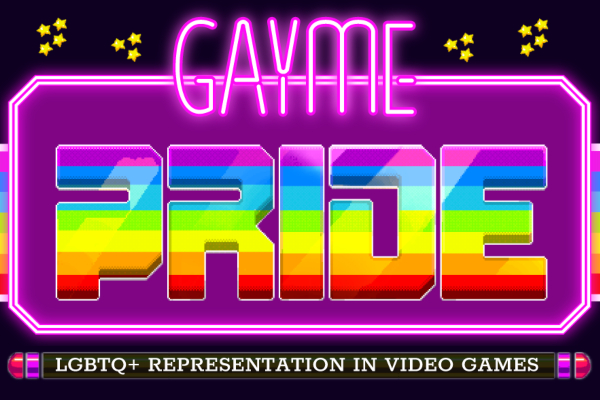 EXPLORING LGBTQ+ REPRESENTATION IN VIDEO GAMES
EXPLORING LGBTQ+ REPRESENTATION IN VIDEO GAMES
Once upon a time, the only representations you’d see of the LGBTQ+ community in video games were cameo roles or even negative stereotypes. LGBTQ+ characters would be identified exclusively by that trait, with no further depth or development.
In the last few years, game makers and story writers seem to be more aware of the LGBTQ+ community and have begun building the community into their stories. We’ve seen a growing number of games where players can play as LGBTQ+ characters in realistic, thoughtful story arcs, where the character’s sexuality is just one part of their identity.
Unlike other media, there’s something especially powerful about designing ‘minority’ characters into video games. In film, TV or radio, audiences just observe whereas, in video games, they play the character’s role and have an opportunity to identify with them. This is particularly encouraging when it comes to promoting tolerance and empathy.
But how far has the gaming industry come in its representations of sexual diversity? To coincide with the upcoming release of their Pride Run game, Green Man Games dug into the data to get a true picture of the number of games with LGBTQ+ characters and see what progress has really been made.
 There have been at least 1,500 titles with LGBTQ+ characters represented since the early 1980s, of which, almost two-thirds have been released since 2014. Some 218 of that total were released in 2018 alone.
There have been at least 1,500 titles with LGBTQ+ characters represented since the early 1980s, of which, almost two-thirds have been released since 2014. Some 218 of that total were released in 2018 alone.
There are many more LGBTQ+ groups represented in almost equal amounts, representing the full spectrum of sexualities.
Added to which, an addition to the community that feels unique to gaming – the concept of ‘playersexuality’. This is where the player’s character can engage in romantic relationships with non-player characters in an otherwise heteronormative video game. You could, for instance, be a male gamer playing as a man in an otherwise heteronormative game, and decide you want to start a romantic storyline with a non-player male character.
You can read the full report here
 What kinds of genres do LGBTQ+ characters appear in?
What kinds of genres do LGBTQ+ characters appear in?
Historically, the community was almost exclusively represented in action, adventure, fighting and interactive novel games. Over time, however, the variety of games featuring LGBTQ+ characters has definitely grown, covering most formats.
 That said, in recent years it is the interactive fiction/visual novel genre that has really dominated – especially since 2010. These games now account for 64% of all games with LGBTQ+ representation in 2019. The interactive fiction/visual novel genre covers a range of games, including titles such as ‘Life is Strange’, games by Quantic dreams like ‘Heavy Rain’ and ‘Detroit Beyond Human’, as well as games in the Telltale series of episodic novels.
That said, in recent years it is the interactive fiction/visual novel genre that has really dominated – especially since 2010. These games now account for 64% of all games with LGBTQ+ representation in 2019. The interactive fiction/visual novel genre covers a range of games, including titles such as ‘Life is Strange’, games by Quantic dreams like ‘Heavy Rain’ and ‘Detroit Beyond Human’, as well as games in the Telltale series of episodic novels.
However, more work needs to be done. LGBTQ+ characters have appeared in no fighter, puzzle or strategy games so far this year, and made up a very small proportion in previous years too.
The company behind this interesting research and online report are excited to add one more contender to the canon of LGBTQ+ games with the upcoming launch of Pride Run.
Pride Run goes back to the early days of rhythm gaming, combining simple controls with great music as you march through Pride-hosting cities of the world. The pixel-art graphics are retro simple, with superb depth; each destination is recognisable with countless nods to architecture, local culture and, the LGBTQ+ communities of each location.
Full details on this LGBTQ+ game here:














You must be logged in to post a comment.